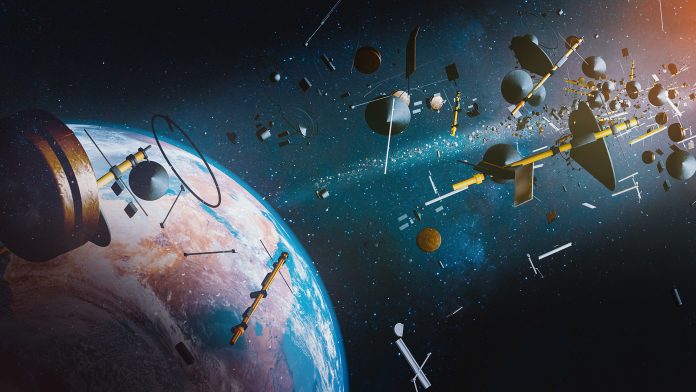With increasing space activities in the modern day, a new and unexpected hazard has started to emerge: space debris.
In the past two years, more satellites have been launched than in the entire six decades of space exploration. This means there are millions of pieces of space debris flying in Low Earth Orbit (LEO).
The majority of space debris consists of human-generated objects, such as pieces of spacecraft, parts of rockets, satellites that are no longer working, or explosions of objects in orbit flying around in space at high speeds.
The increasing threat of space debris
Today, around 28,160 tracked objects remain in orbit, which are monitored by the US Space Surveillance Network.
Due to the rate of speed and volume of debris in LEO, current and future space-based services, explorations, and operations pose a safety risk to people and property in space and on Earth.
Most space debris is moving fast and can reach speeds of 18,000 miles per hour, almost seven times faster than a bullet.
Due to the rate of speed and volume of debris in LEO, current and future space-based services, explorations, and operations pose a safety risk to people and property in space and on Earth.
So, what initiatives are ongoing to tackle this issue?
The ESA Zero Debris initiative
At the Ministerial Conference of 2022, ESA was encouraged by Member States to implement a Zero Debris approach for its missions and to encourage partners and other actors to pursue similar paths.
Building on a decade of collaborative work, ESA has taken the lead in space sustainability by introducing the ‘Zero Debris approach’.
This is a bold goal: significantly limit the production of debris in Earth and Lunar orbits by 2030 for all future missions, programmes, and activities.

The Agency put forward eight recommendations for zero space debris by 2030. They are:
- Guarantee successful disposal: ‘Self disposal’ through atmospheric re-entry or re-orbiting to a safe altitude should be verified in advance of a mission’s launch, with a probability of success higher than a certain minimum threshold.
- Improve orbital clearance: By reducing the time an object is in orbit, the smaller the chance that it will collide with another object and create further debris.
- Avoid in-orbit collisions: Improved collision avoidance strategies – using automation, traffic coordination, communication protocols and more – are needed as the risk of collision increases.
- Avoid internal breakups: Enhanced health monitoring and robust passivation techniques should be implemented to prevent satellites from breaking up from within.
- Prevent intentional release of space debris: Recommendations emphasise that the intentional release of any ‘Mission Related Object’ – such as protective covers, lens caps, rocket fairings – should be avoided to prevent further debris growth.
- Improve on-ground casualty risk assessment: Standardised tools and methodologies should be developed for assessing the casualty risk of re-entering objects on the ground and verifying assessments of a mission’s demise.
- Guarantee dark and quiet skies: Measures should be identified and implemented to minimise the impact of space objects on optical and infrared astronomy, as well as radio astronomy, to maintain dark and quiet skies.
- Beyond the protected regions: Other orbits, such as those used by Global Navigation Satellite System (GNSS) constellations and lunar orbits, should also be considered and protected to ensure their long-term sustainability.
Support for cleaning up junk in LEO
Just this month, ESA announced that over 40 companies, NGOs, and research institutions have signed the Zero Debris Charter at the Berlin International Airshow.
The space community has shown robust support for the Zero Debris Charter initiative.
Together with ESA, 12 European countries were recently the first to sign the Zero Debris Charter at the ESA/EU Space Council in Brussels.
Over 100 organisations worldwide have registered their intent to sign and join the collaborative effort in the coming months – dozens of them signing the Zero Debris Charter today.
The future of zero debris
In the upcoming months, there will be further opportunities for organisations to sign the charter at other events.
Furthermore, the goals and guiding principles of the Zero Debris Charter are being translated into actionable and measurable technical targets. New technologies will be developed to achieve the ambitious Zero Debris targets.
At the request of the community, ESA is facilitating the creation of a Zero Debris Technical Booklet.
Workshops will be conducted with volunteers to collaboratively develop the Zero Debris Technical Booklet, which will be a comprehensive compilation of the needs, technical solutions and contributions collected through crowdsourcing within the community.









